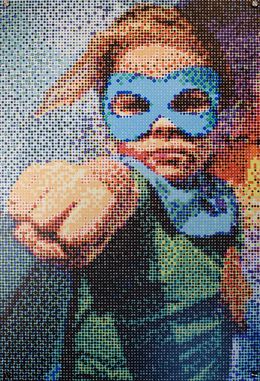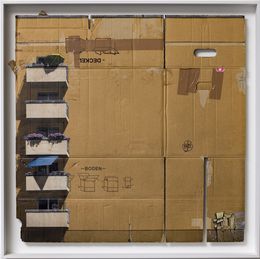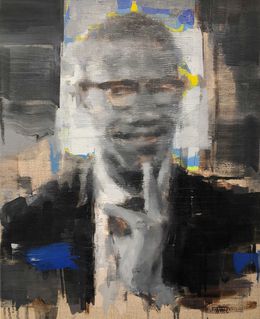
Meet Esther Grimm
Executive director of 3Arts

Portrait of Esther Grimm © Joe Mazza Brave Lux Chicago
Esther Grimm is the executive director of 3Arts, a Chicago-based organization offering support to women artists, artists of color, and Deaf and disabled artists through unrestricted awards, residencies, project funding, and professional development programs designed to help them build momentum in their art practices and careers. Join Artsper as we chat with Esther all about her career so far, 3Arts, and accessibility in the arts!
1. Hello Esther! Could you introduce yourself and tell us a bit about the story of 3Arts?
I can't believe it's true, but I just celebrated my 20th anniversary as the executive director of 3Arts. I took on this role at a time when our organization was on the brink of undergoing a complete transformation from providing artist housing in a historic landmark building to providing grant and program support for Chicago artists. It has been an incredibly fulfilling experience to help build 3Arts into what it is today.
Not many people know that our organization was founded as The Three Arts Club of Chicago by Jane Addams and 30 other civic leaders as a home and a club for young women studying the arts in our city. That was eight years before women had the right to vote in the United States, and the idea was to help them find professional inroads into the male-dominated arts world. Our organization was once part of a network of Three Arts Clubs located around the world, including in Paris, London, New York, Los Angeles, Philadelphia, and Cincinnati. To get a flavor of what it must have been like to stay at a Three Arts Club, check out the 1937 film Stage Door, starring Katharine Hepburn.
2. What is the aim of 3Arts?
Our mission spans dance, music, teaching arts, theater, and visual arts. Because we focus on artists in the Chicago metropolitan area, our support is also an investment in the vibrancy and wellbeing of every neighborhood in which they live and work. In a way, our mission is quite self-serving given that we are advocating for artists whose work adds vitality and creative energy to everyone it touches in our region—residents and visitors alike.
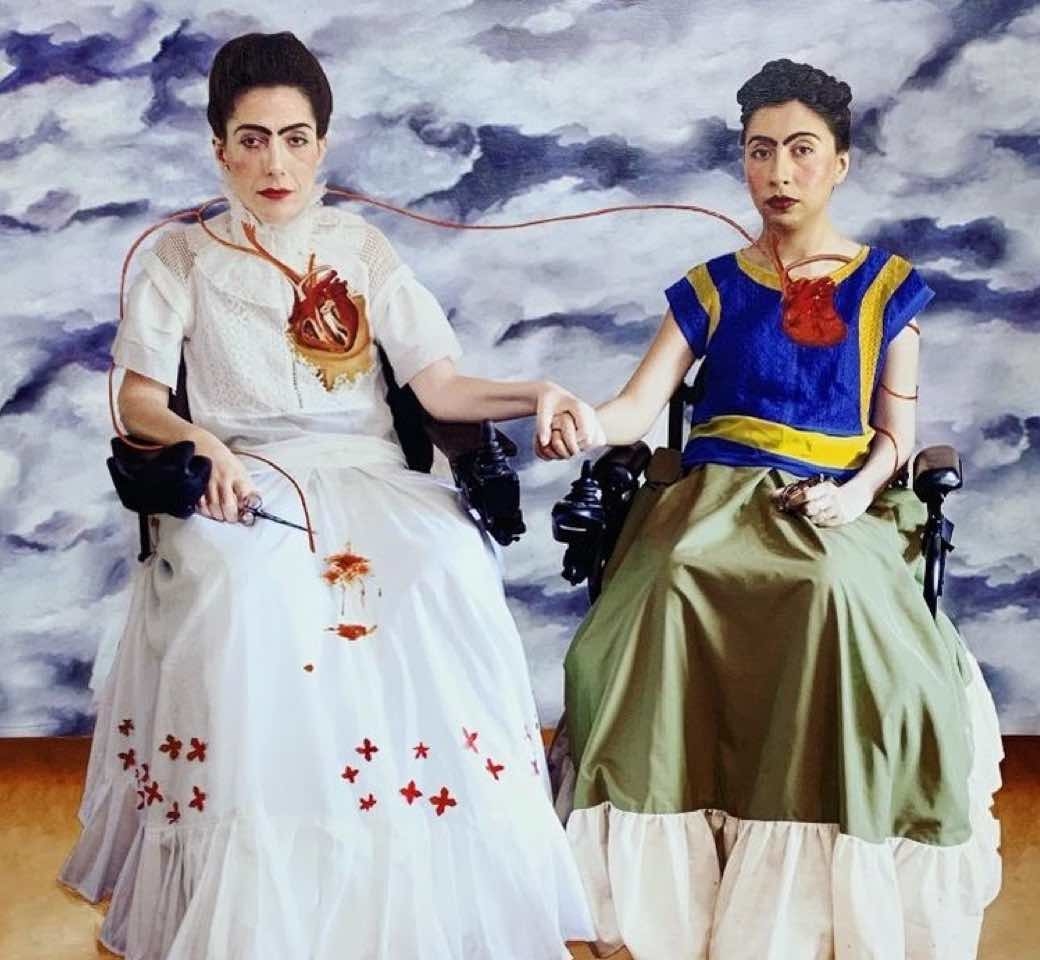

On the left: Tres Fridas Project by Tara Ahern, Mariam Paré, and Reveca Torres © the artists, on the right: Six Feet Apart, Candace Hunter © Candace Hunter
3. The Three Arts Club has been present in Chicago since 1912. Would you say that the spirit of the city plays a significant role in the organization's ethos?
Chicago is at the heart of our work. The former Three Arts Club of Chicago attracted women artists and art students to our city by offering temporary housing and programming. It was very much about shining a spotlight on Chicago as a formidable urban arts hub. 3Arts continues that emphasis by supporting local artists and, we hope, connecting them to audiences near and far as they evolve their careers.
4. 3Arts places a strong focus on working with the local community. What would you say is the importance of community outreach when trying to encourage accessibility in the arts?
Virtually everything we do emerges from our conversations, convenings, surveys, and interviews with artists and with the input of our Artist Council, which is a nine-member “think tank" of artists who have received grants and other support from our organization. Chicago has a very collaborative and supportive arts community, in which artists show up for one another. As an organization, we strive to create opportunities that encourage and build upon that collaborative mentality and practice. For instance, this year we created 3AMP, 3Arts Mentorship Program, which functions as a way for artists in our network to connect with and support each other through skill-sharing, thought partnership, or traditional mentor/mentee relationships.
5. Increasing accessibility for Deaf and disabled artists is central to your ethos. Could you expand on what you have done to overcome the lack of accessible training programs in the arts?
I wish we could say that the lack of access to the arts for Deaf and disabled artists has been overcome, but it's a work-in-progress for the field. There certainly is an increasing emphasis on disability arts and audience accessibility in our sector, but we haven't yet reached the point where we can say that the full spectrum of humanity is represented on the majority of performance stages and in exhibition spaces. In light of that, we launched the 3Arts Disability Culture Leadership Initiative two years ago as a platform to showcase the work and wisdom of artists with disabilities and, we hope, serve as a resource for organizations where they can identify artists to engage. The platform is located on our website and features a series of video conversations among artists in a wide range of disciplines.
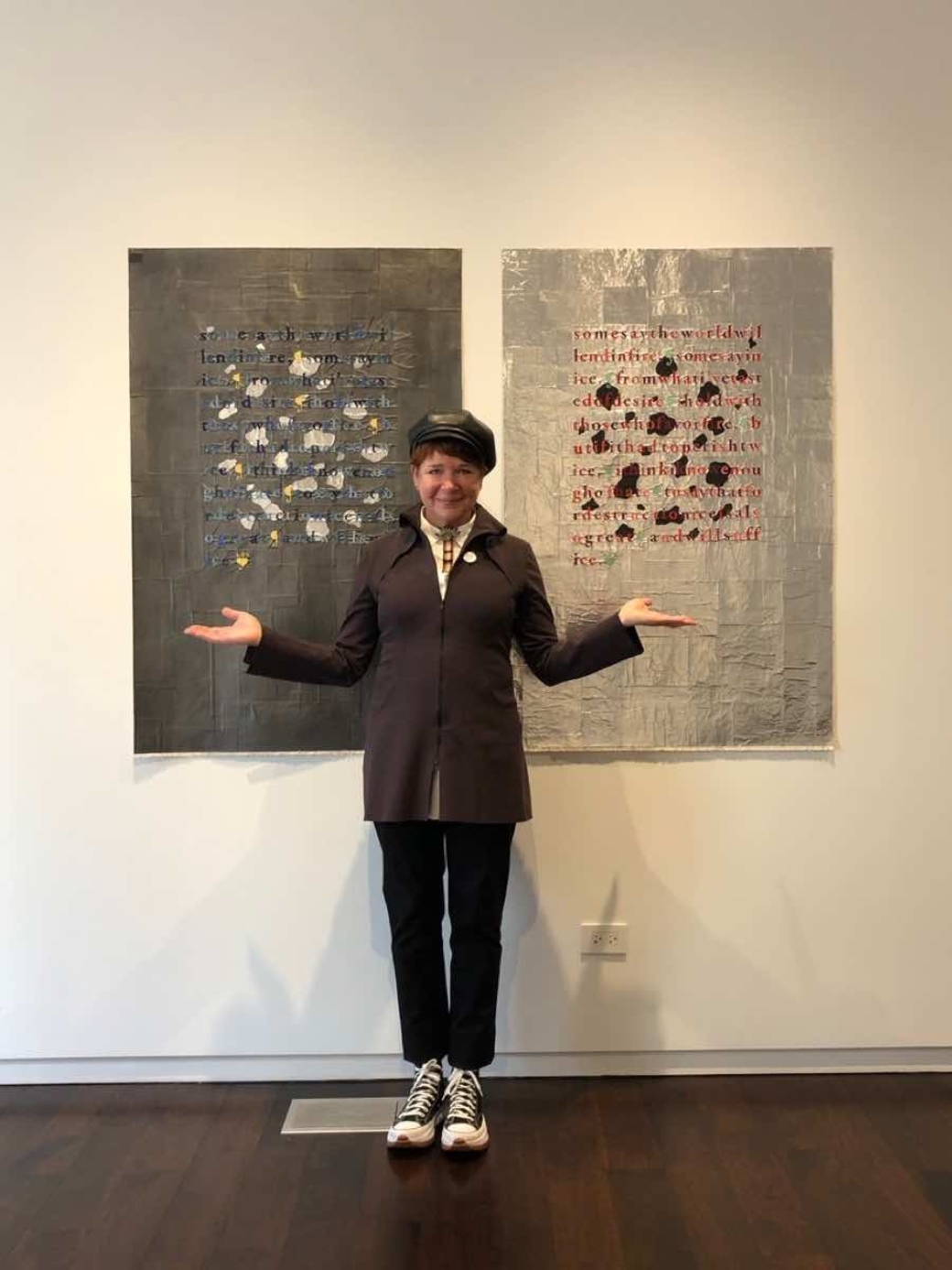
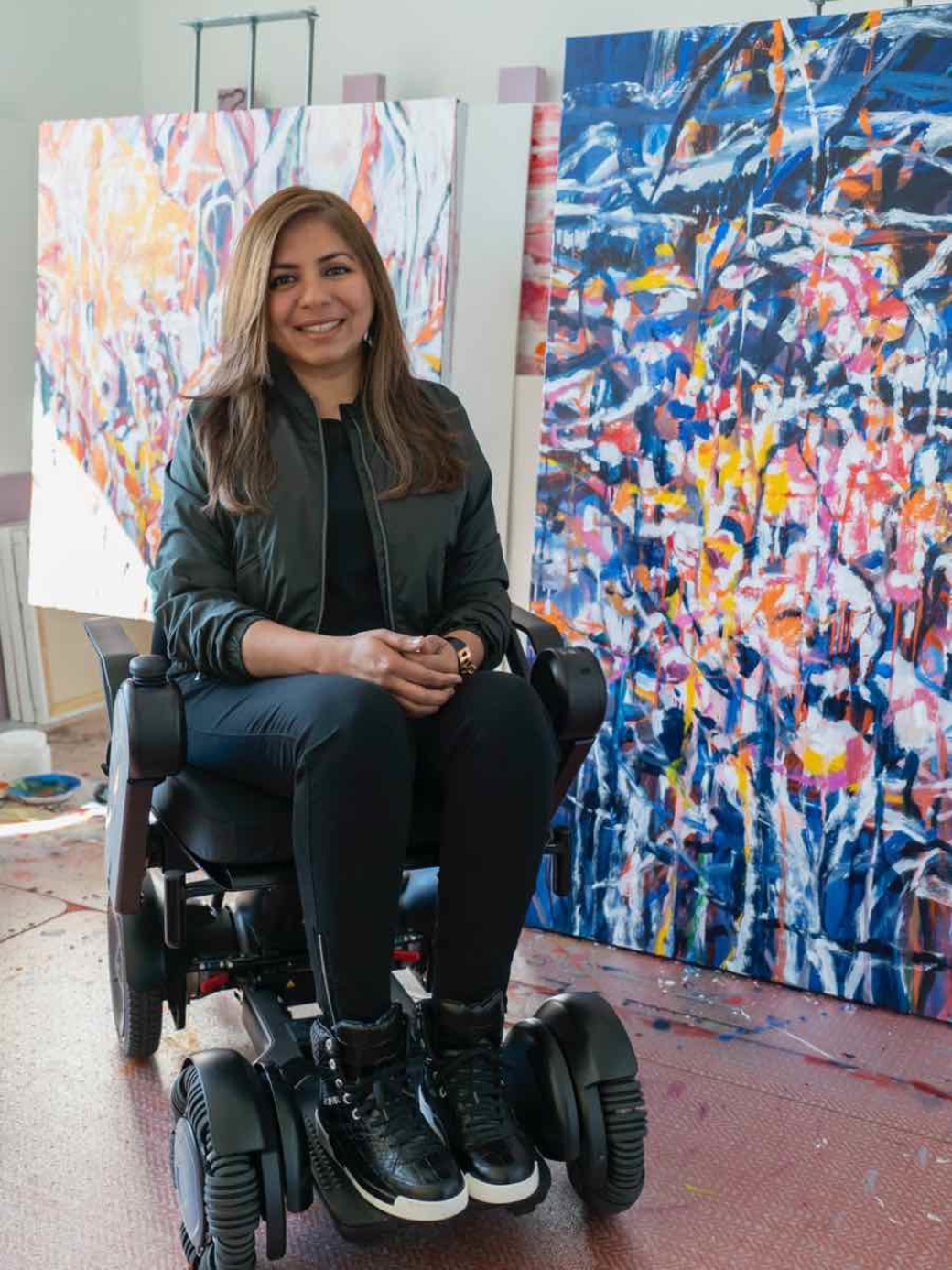
On the left: Esther visiting Dianna Frid exhibition at Alan Koppel Gallery © 3Arts, on the right: Pooja Pittie in her studio © Abbi Chase
6. Over the past 5 years 3Arts has seen significant growth. From the launch of an online crowdfunding platform, 3AP (3Arts Projects) in 2012, to the Disability Culture Leadership Initiative (DCLI) in 2021. How has the intersection of art and tech changed what you do?
With just three full-time staff members, we have relied on partnerships with media artists, videographers, production experts, audio describers, and sign language interpreters to amplify our online presence. One of the biggest benefits of online programming is that we reach more people beyond Chicago than we can during an event in, say, a theater space. This year, someone from Panama attended our annual awards event! Online programming is also incredibly accessible. I think the most important thing we learned in doing this work is how much thought needs to go into every element in order to convey the same warmth and sense of spontaneity (ironically) that an in-person program does.
7. When speaking about art, there is a tendency to use biased language; “emerging" to refer to a young artist, “established" to refer to an older, or more traditional artist. What can be done to change the conversation surrounding the language of the art world?
At 3Arts, we encourage the jury panelists enlisted for our various awards programs to surface their biases and to talk freely about their inclinations with each other so that, collectively, they can avoid any missteps as they select awardees. While there is a tendency in the arts world to equate “innovation" with emerging artists and “traditional" with established artists, many artists defy those stereotypes. I think it's important to be aesthetically flexible and open to a wide range of art and ideas.
We similarly approach conversations around “quality," inviting consideration around whose definition determines whether a work of art is of a high quality. It is often the case that these kinds of constructs reflect dominant culture and other hierarchies that overlook incredibly exciting work.
8. Finally, what piece of advice would you give to artists who are wanting to enter the scene?
In the realm of grants and awards, I know artists who have applied many years in a row and experienced the often-demoralizing culture of rejection that these competitive programs engender. I also know that perseverance can pay off. We witness that in our own awards programs when artists who have not been selected by a jury panel one year are selected by a different jury panel the next. If there is an opportunity to receive application feedback, that can be helpful. At 3Arts, we offer private feedback sessions that about 40 artists take us up on each year. If you are interested in grant support—apply, apply, apply.
Their favorite artworks


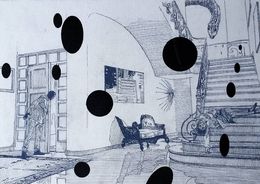



George Grosz
Fine Art Drawings - 65 x 52.5 x 0.2 cm Fine Art Drawings - 25.6 x 20.7 x 0.1 inch
$46,383
